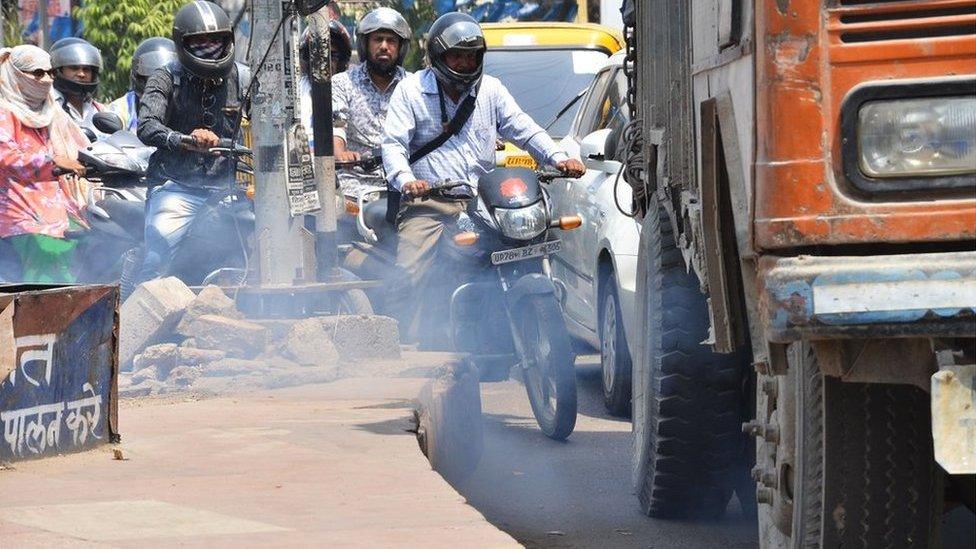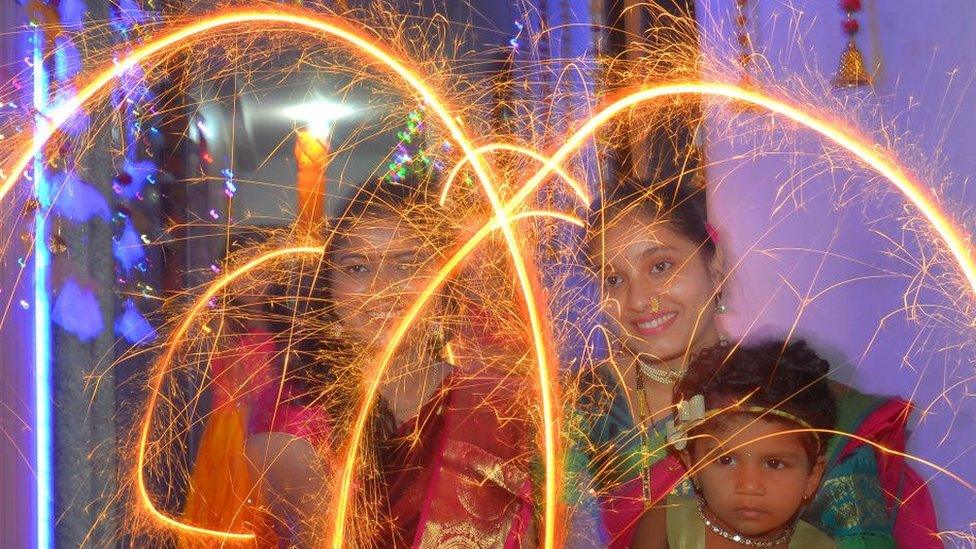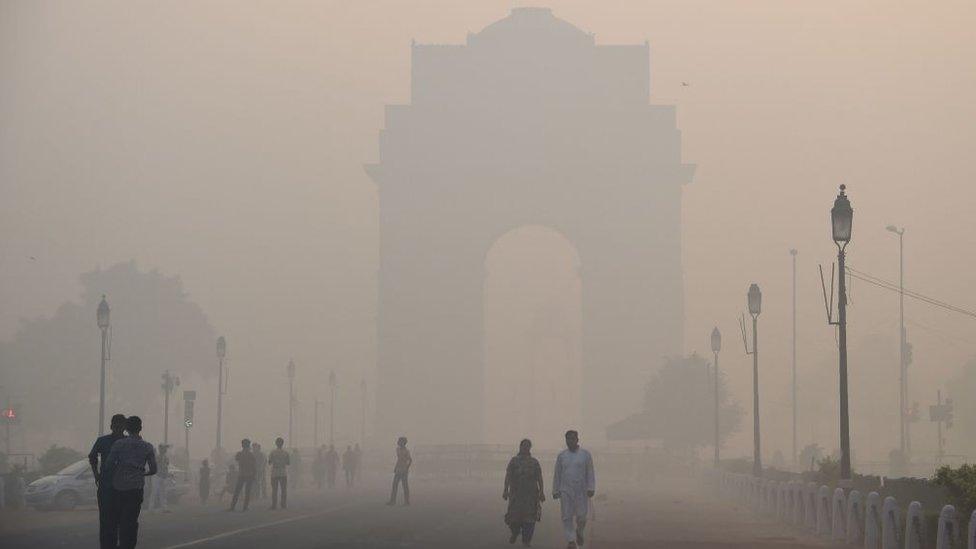Lancet study: Pollution killed 2.3 million Indians in 2019
- Published

In Delhi, air pollution is especially bad in winters due to stubble burning
Pollution led to more than 2.3 million premature deaths in India in 2019, according to a new Lancet study.
Nearly 1.6 million deaths were due to air pollution alone, and more than 500,000 were caused by water pollution.
The latest Lancet Commission on pollution and health, external report blamed pollution for nine million - or about one in six - deaths globally.
It said India - where bad air kills more than a million people every year - remained among the worst affected.
In an update of a 2015 estimate on premature deaths caused by pollution, the Lancet study said that data from the Global Burden of Diseases, Injuries and Risk Factors Study 2019 (GBD) showed that pollution "remains responsible for approximately nine million deaths per year."
Although there has been a decline in deaths attributable to types of pollution associated with extreme poverty such as household air pollution and water pollution, this fall has been offset by increased deaths caused by industrial pollution, ambient air pollution and toxic chemical pollution.
Globally, air pollution - both ambient and household - was responsible for 6.7 million deaths in 2019. Water pollution was responsible for 1.4 million deaths and lead pollution caused 900,000 premature deaths.
The study found that more than 90% of pollution related deaths occurred in low-income and middle-income countries, with India topping the list with 2.36 million and China at number two with 2.1 million deaths.
The report says that in 2000, losses due to traditional pollution were 3.2% of India's GDP. Since then, death rates caused by traditional pollution have fallen and economic losses have reduced substantially, but these are still around 1% of India's GDP.
Between 2000 and 2019, economic losses caused by modern forms of pollution - ambient, chemical and lead pollution - have increased and are now "conservatively estimated to amount to approximately 1% of GDP" in India.
The report says that India has made efforts to control air pollution especially with the ambitious Pradhan Mantri Ujjwala Yojana, a scheme launched in 2016 by Prime Minister Narendra Modi to help poor rural women shift to cooking gas, but gaps remain.
"India has developed instruments and regulatory powers to mitigate pollution sources but there is no centralised system to drive pollution control efforts and achieve substantial improvements," the study said adding that in 93% of the country, the amount of pollution remains well above the World Health Organisation (WHO) guidelines.
Indian cities have been routinely dominating global pollution rankings. More than 480 million people in northern India face the "most extreme levels of air pollution in the world", a study by a US research group said last year.
In September last year, data from the Energy Policy Institute at the University of Chicago suggested that residents in the capital, Delhi, could see up to 10 years added to their lives if air pollution was reduced to meet the WHO guideline of 10 µg/m³.
In 2019, India's average particulate matter concentration was 70.3 µg/m³ - the highest in the world.
The BBC's Vikas Pandey shows what it's like driving through the high levels of smog in Delhi

Related topics
- Published3 May 2019

- Published25 October 2022

- Published9 December 2021

- Published1 September 2021
